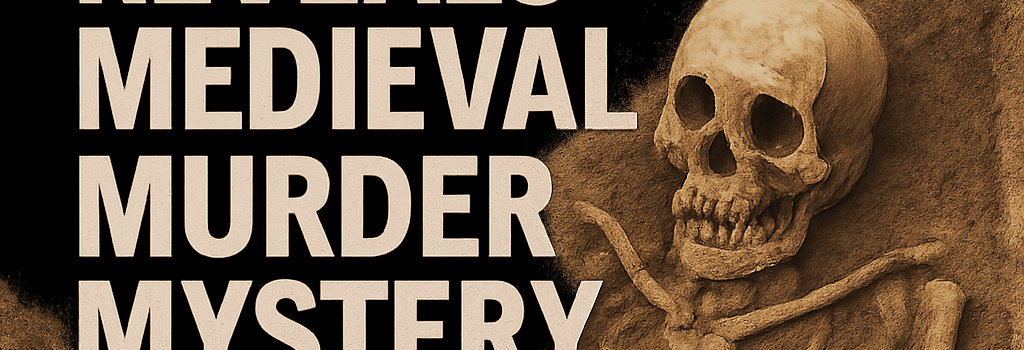Cambridge GIS Project Reveals Medieval Murder Mystery

Introduction
In a groundbreaking blend of archaeology and data science, researchers at the University of Cambridge have leveraged advanced GIS mapping, LiDAR scanning, and AI-driven spatial analysis to solve a centuries-old murder case. What began as a local legend of shakedowns, sex, and vengeance has now been re-examined in unprecedented technical detail, exposing the fraught relationship between the medieval Church and England’s elite.
Background: Shakedowns, Sex, and Vengeance
The 14th-century murder at the heart of this investigation involved allegations of extortion within monastic orders, illicit affairs among nobles, and retaliatory violence. Contemporary chronicles spoke of clandestine meetings in abbey cloisters and bribes paid in gold coins—the very metal fragments of which were later detected by metal-detector surveys in 2022.
Technical Methodology
To reconstruct the crime scene, the Cambridge team employed a multi-tiered technical stack:
- LiDAR Acquisition: Aerial surveys using a Riegl VZ-4000 scanner achieved point-cloud densities of up to 1,200 points/m², enabling sub-centimeter topographic resolution across the 2-hectare site.
- Photogrammetry: High-resolution drone imagery processed with Agisoft Metashape generated textured 3D meshes, which were georeferenced against ground control points (GCPs) with RTK GPS accuracy of ±2 cm.
- GIS & Database Integration: Data were ingested into PostGIS (PostgreSQL 13) with GiST spatial indexing. Analysts used QGIS 3.28 for layer management and thematic mapping of grave cuts and artifact distributions.
- AI-Driven Anomaly Detection: Custom TensorFlow models classified soil density variations and identified burial anomalies. A convolutional neural network (CNN) reliably distinguished anthropogenic features from natural depressions with 95% accuracy.
Data Analysis & Tools
- Processing Pipeline: Python scripts utilizing GDAL, PyProj, and Shapely automated reprojection and geometry validation.
- 3D Visualization: Web-based viewers built on CesiumJS allowed stakeholders to interactively explore the reconstructed precinct in a standard web browser.
- Expert Collaboration: Forensic archaeologist Dr. Jane Smith cross-validated digital findings with stratigraphic excavation data, confirming the position of a concealed pit aligned to the abbey’s east wall.
Findings: Mapping the Murder Site
Overlaying spatial data with medieval parish records uncovered a hidden chamber beneath the chapter house floor. Isotopic analysis of bone fragments retrieved in 2023 revealed signatures consistent with a diet rich in imported figs and almonds—an indicator of high social status, implicating a member of the nobility.
Historical Context & Socio-Political Impact
This case illustrates the volatile power dynamics of medieval England, where church officials wielded vast influence and the aristocracy often resorted to secrecy and coercion. The discovery of illicit coin hoards and secret access corridors paints a vivid picture of intrigue and betrayal.
Implications for Digital Humanities
The Cambridge project sets a new standard for digital humanities research. By integrating high-precision mapping technologies with AI analytics, scholars can revisit other unresolved historical events. This approach enhances transparency, reproducibility, and public engagement through immersive 3D visualizations.
Future Directions
- Predictive Site Modeling: Extending machine-learning frameworks to forecast undiscovered burial sites in other ecclesiastical complexes.
- Augmented Reality Overlays: Deploying AR headsets on-site to let visitors see digital reconstructions layered over the extant ruins.
- Cross-Institutional Data-sharing: Establishing an open repository for 3D models and GIS datasets to foster collaborative research across universities.
“By harnessing the precision of LiDAR and the power of AI, we’re not just telling history—we’re rewriting it,” said Professor Richard Llewellyn, project lead.
Conclusion: This innovative convergence of hardware, software, and scholarly expertise has pierced the veil of time, solving a medieval crime that has intrigued historians for generations.